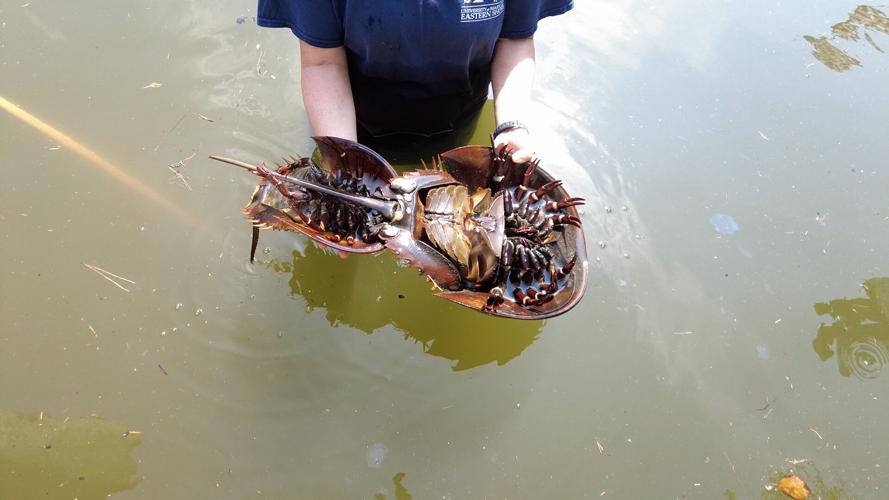OCEAN CITY, Md. -- The number of horseshoe crabs dying in a canal on 94th street in the past three years has been alarming. However, the reason for this is still unknown and it's why researchers are trying to get to the bottom of these puzzling deaths.
A group of professors, undergraduate and graduate students from the University of Maryland Eastern Shore went out to the canal early on Thursday morning. Gearing up to scan for crabs they had tagged a week earlier.
The group was led by Dr. Maggie Sexton and Dr. Eric May, both professors at UMES.
"We tagged 60 crabs, it's the same technology used to microchip dogs," said Sexton. "Scanning to try and find them again, to see if the same crabs are hanging out or if they're coming and going," said Sexton.
Whether the crabs are coming or going is one of the many mysteries that lurks beneath the water in the 94th street canal.
"We've looked at it over the last three years trying to figure out what are the things that come together to cause these crabs to die, we're not sure," said May.
The group tasked with solving this riddle has revealed a few clues so far.
"Our best guess is that it's a combination of things, we've done water quality tests, the temperature is high, it's not high enough to be lethal, the dissolved oxygen is low, again it's not high enough to be lethal," said Sexton.
Sexton said horseshoe crabs are used to burying themselves in mud and experiencing low levels of oxygen. So while the oxygen or water temperature's alone are not enough to kill, Sexton said those factors, coupled with the possibility of a poor spawning ground could be why so many are dying.
Adding a layer to this enigma, is while water conditions stayed roughly the same, less dead horseshoe crabs have been spotted this year.
Narrowing down the cause of death has been the goal for three years and on Thursday, researchers were hoping to inch a bit closer. The tag and retrieve method done on Thursday, depending on how many crabs were recovered, could mean a few things.
If a lot of the crabs tagged were recovered, it means they are staying put and trying to use the canal and the artificial beach created by UMES as a spawning habit. The issue?
"We've not yet found eggs in the sand of our beach, so the question is whether it is an actual suitable spawning habitat is still an open question," said Sexton.
If it's not suitable and the crabs are staying put, it could be an issue for the keystone species.
"They're critical to the shorebirds that travel up and down the East Coast, so loss of that species is going to be an ecological and economic blow," said May.
In the end, the group only recovered one tagged crab. Sexton said it could mean the crabs are coming and going, but it could also mean those crabs are just hiding under boats.
A total of 40 crabs were scooped up on Thursday, which Sexton said means a fairly large population does exist in the canal.
The work in the 94th street canal for this year is about to wrap up, but Dr. Sexton and her crew will be back out there next summer. They ask anyone, if you live near a canal and notice a high mortality rate of horseshoe crabs to report it. It could go a long way in making sure horseshoe crabs stick around for the foreseeable future.




